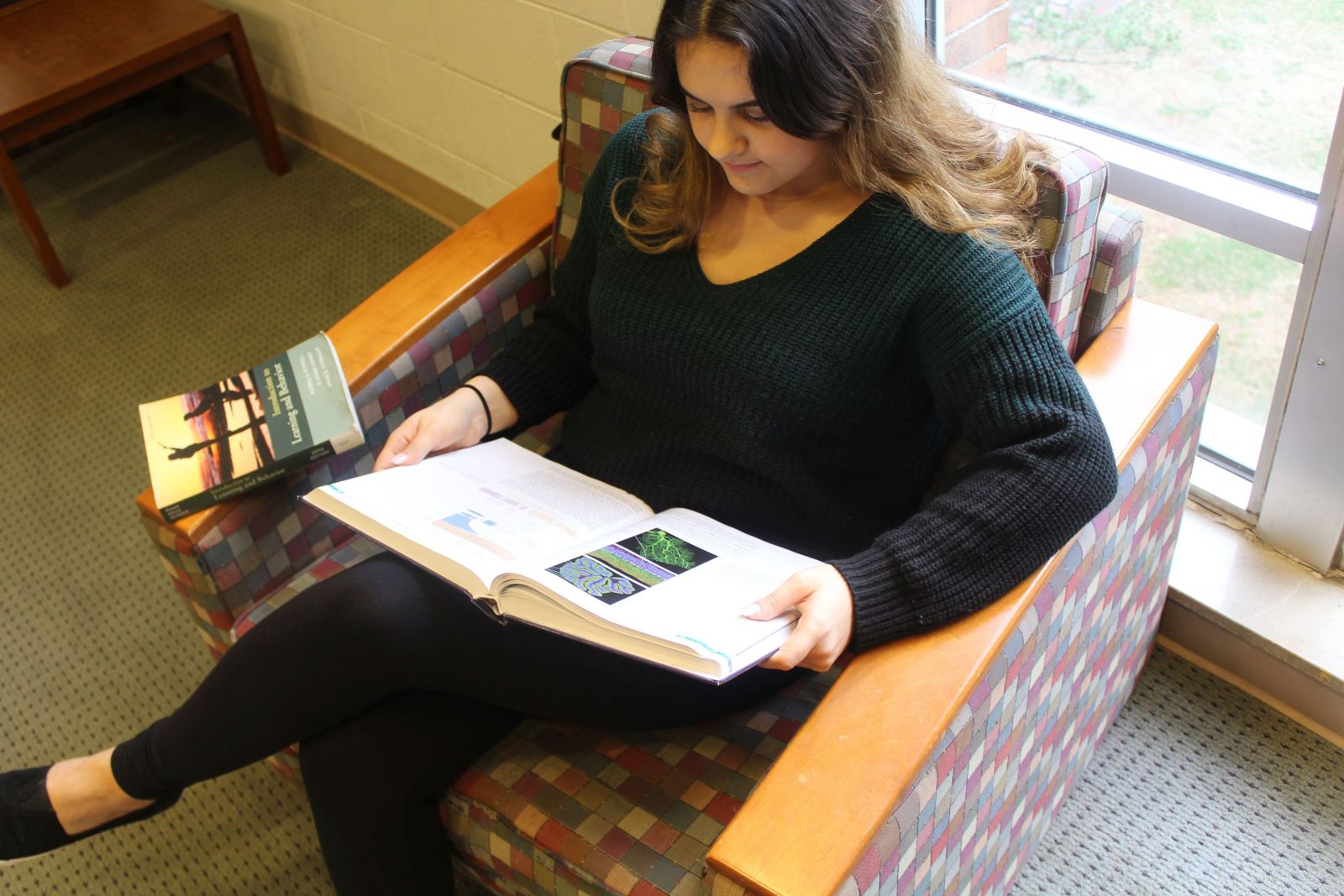By Jordan Williams & Asia Randolph, W&M Libraries

As textbook costs have continued to rise, many students at William & Mary have devised ways to manage the burden of these costs. Jessica Hall ’21 is one such student.
Hall explained that she invests an extensive amount of time into finding cheaper substitutes for her required textbooks. She recognizes, however, that some students do not have enough extra time to hunt down other options.
“The fact that I’m able to find cheaper alternatives, but only if I’m able and willing to put in hours of work seems kind of problematic,” she said. “I don’t think textbook or course material prices should limit a student’s ability to succeed in their class.”
William & Mary Libraries has launched a Textbook Affordability Initiative on campus to address the rising costs of textbooks.
“The cost of textbooks has increased more than 400 percent in the last 20 years,” said Asia Randolph, W&M Libraries graduate assistant. “It’s rising at a much faster rate than inflation. For students who have to buy 4, 5 or 6 textbooks each semester – sometimes more – it becomes too much for their budgets to handle.”
W&M Libraries wants to ensure all students have access to the information they need to be successful in their classes; thus, the Textbook Affordability Initiative was created.
The effort is managed by a task force of librarians, faculty, staff and students, who were responsible for providing recommendations to Provost Peggy Agouris for ways to make textbooks more affordable.
The task force launched a textbook affordability awareness campaign in the fall using the web, social media, video and other incentives for students to learn about this issue.
The task force also gathered feedback from students via survey about their textbook purchasing habits, and held focus groups with faculty members to understand how they choose course materials.
 “The student survey has opened my eyes,” said Paul Heideman, biology professor and co-chair of the task force. “I would not have predicted so many students avoid courses or don’t perform well in them because of textbook costs. From looking at the numbers, 15 to 20 percent of students are avoiding courses with expensive textbooks.”
“The student survey has opened my eyes,” said Paul Heideman, biology professor and co-chair of the task force. “I would not have predicted so many students avoid courses or don’t perform well in them because of textbook costs. From looking at the numbers, 15 to 20 percent of students are avoiding courses with expensive textbooks.”
During the focus group meetings, they learned that a number of professors are using alternative resources in their teaching. The most common substitutes for textbooks are open educational resources and library resources, such as e-books and journal articles.
“I think it’s really important that faculty think about other options to help control costs for students,” Heideman said. “We should be doing everything we can to encourage faculty members or others to produce open educational resources.”
A handful of potential strategies to alleviate the issue came out of the student survey. One of them was for faculty to advertise necessary course materials prior the registration to 1) give students the chance to budget for the semester and 2) allow students to investigate alternatives.
“I don’t think there is just one solution that we could implement to solve textbook affordability,” said Hall. “I believe one step is just making professors aware of textbook affordability issues and how it causes inequality for certain students.”
The primary charge of the task force was to develop and deliver near-term and long-term recommendations for making textbooks more affordable for W&M students. These recommendations were presented in an open forum in February.
Among the recommendations is a call for increased awareness of open educational resources and their benefits to student outcomes. Assistance from the Studio for Teaching & Learning Innovation and W&M Libraries was presented as one solution to barriers reported by faculty to OER adoption and creation.
“Besides a call for increased funding for OER support, faculty mentioned not knowing where to start as a major barrier,” Randolph said. “I think the collaboration between STLI and W&M Libraries will significantly increase access for our students.”
Read the full task force report and find more information about W&M Libraries open education efforts.

